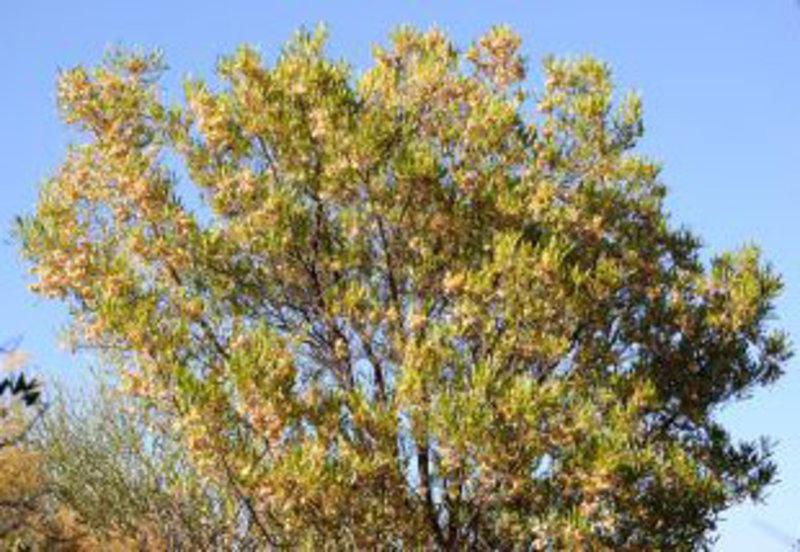Dodonaea angustifolia

Description
Dodonaea angustifolia, the sand olive, is a slender shrub or small tree that occurs naturally from southern Africa to Arabia, as well as in Australia and New Zealand. The seed capsules are three-winged and are dispersed by wind. Although naturally occurring in rocky areas it is also cultivated to stabilise moving sand and to prevent erosion. Extracts are used as medicine.The dense bushy hedges which it may form are ideal bird nesting sites and the flowers attract butterflies. The seed has papery wings and is possibly dispersed by wind.
This shrub is grown worldwide, as the roots have soil-binding properties which are effective for the purpose of stabilizing sand dunes and to control erosion.
Image credit: SANBI/PlantZafrica
Propagation instructions - seeds
Seed can be harvested in autumn and sown in spring into plastic seed trays. A sandy soil mix is used mixed with 10% compost. Dodonaea germinates quite easily,so no special treatment of the seed is needed, and it does well in cultivation. The plastic seed trays are then kept moist and the seeds will germinate in 2-3 weeks' time. When the seedlings are about 100-150 mm tall they are moved to a netted hardening area that gets 30% shade during the day, making them used to more sun.
From there they can grow up to 300-400 mm tall before they are transplanted to 2 L or 4 L bags. As soon as they are transplanted they are moved to areas receiving full sun where they will be buffeted by winds,as in nature, and may be watered as needed.
The Dodonaea specimens are then transplanted to 10 L bags when they are around 1.2 m tall (Geldenhuys, J. pers. comm. 2011).
Sources and references
Scientific name
Dodonaea angustifolia
Common name(s)
Sand olive
Features
- Attracts butterflies
- Can be used as a hedge
- Drought-resistant
- Easy to grow
- It provides medicinal value
- Pioneer species
- This is a bird-friendly species
